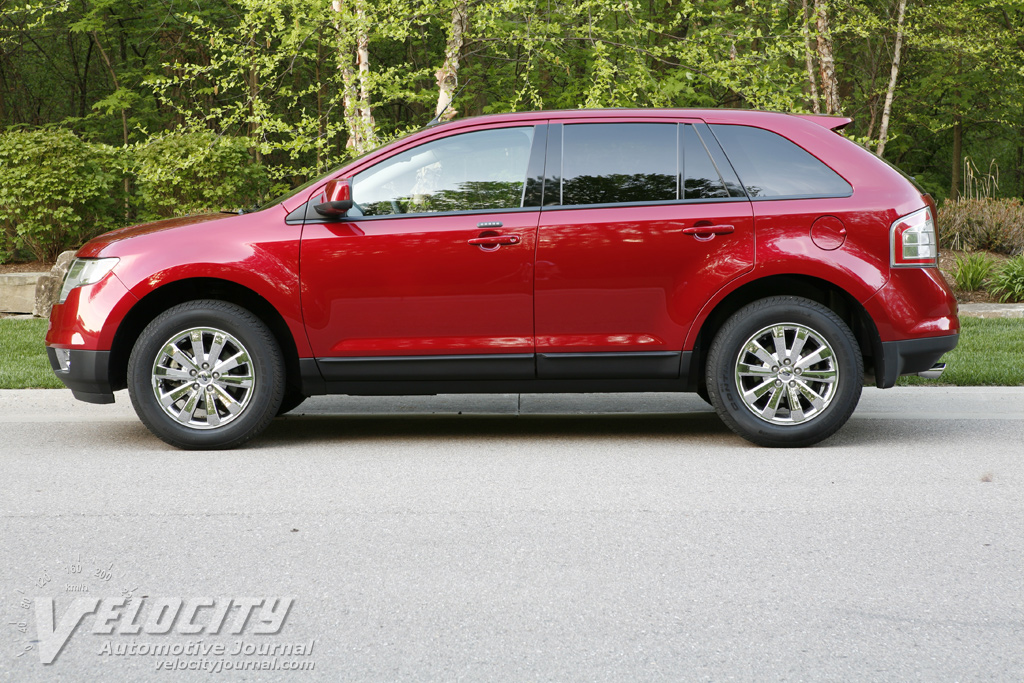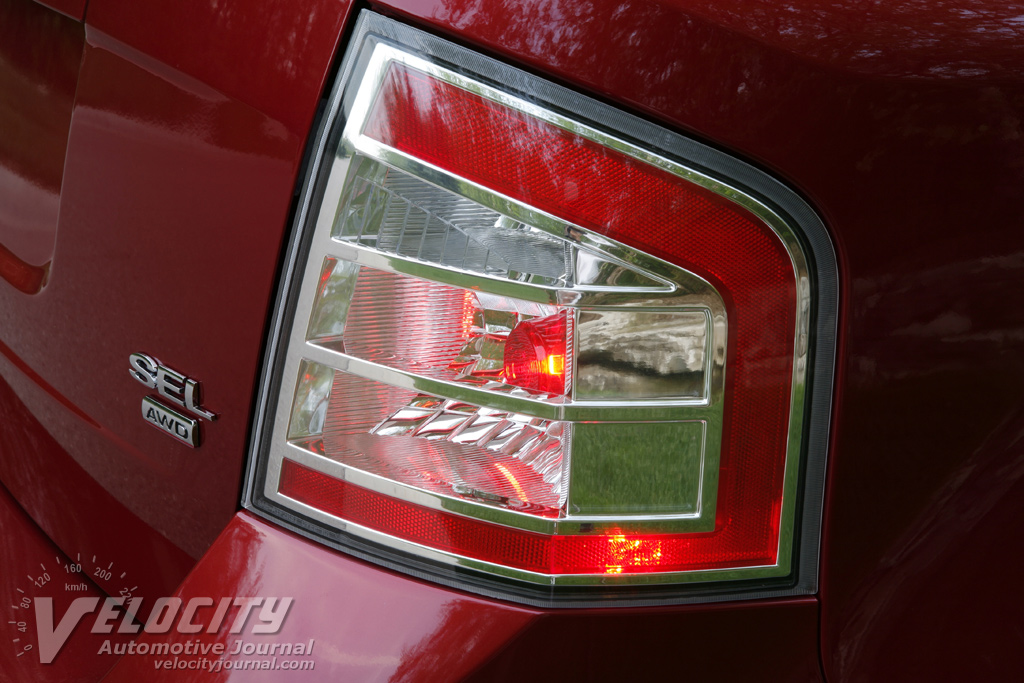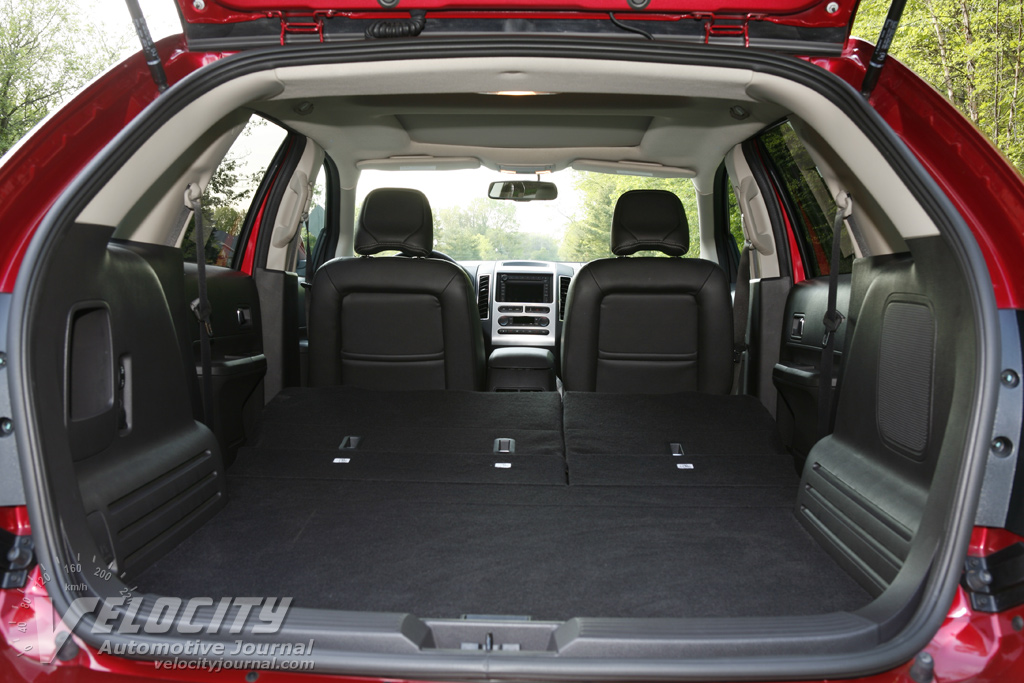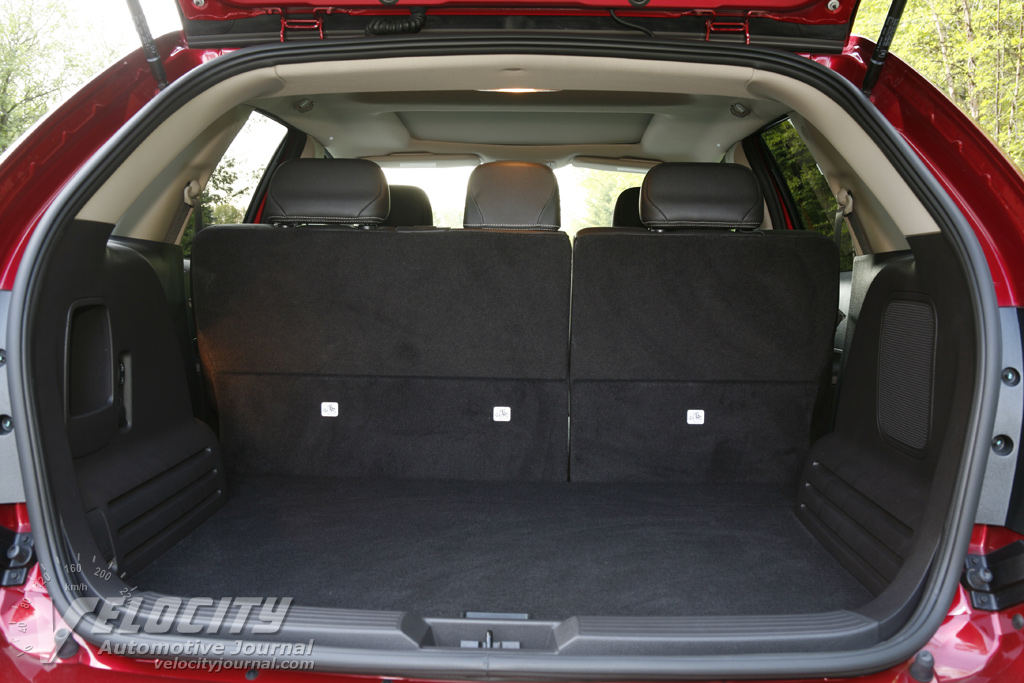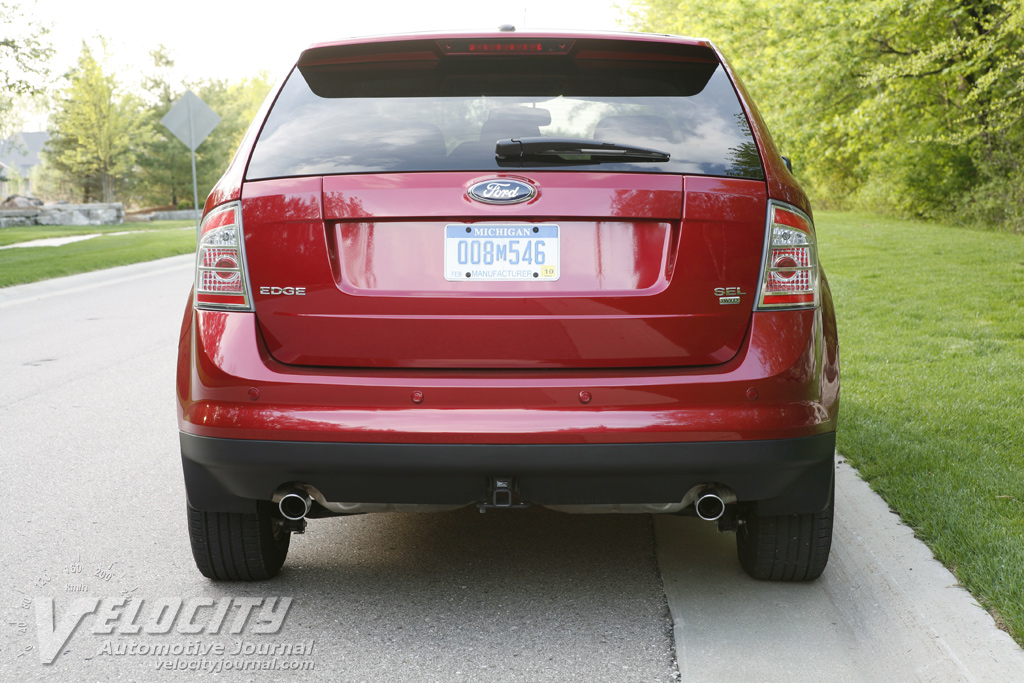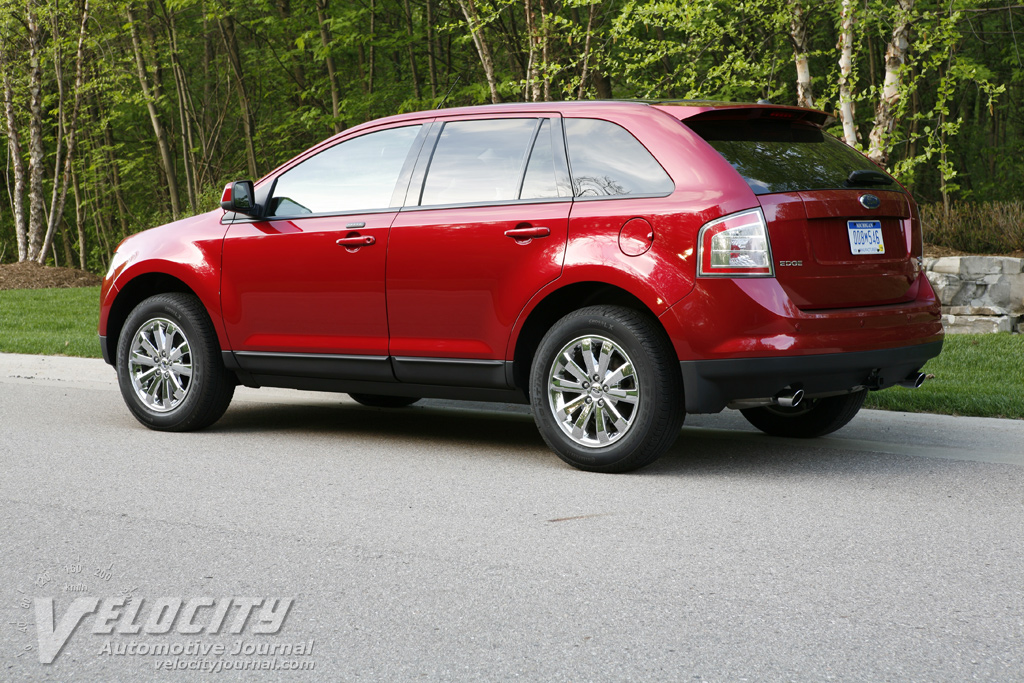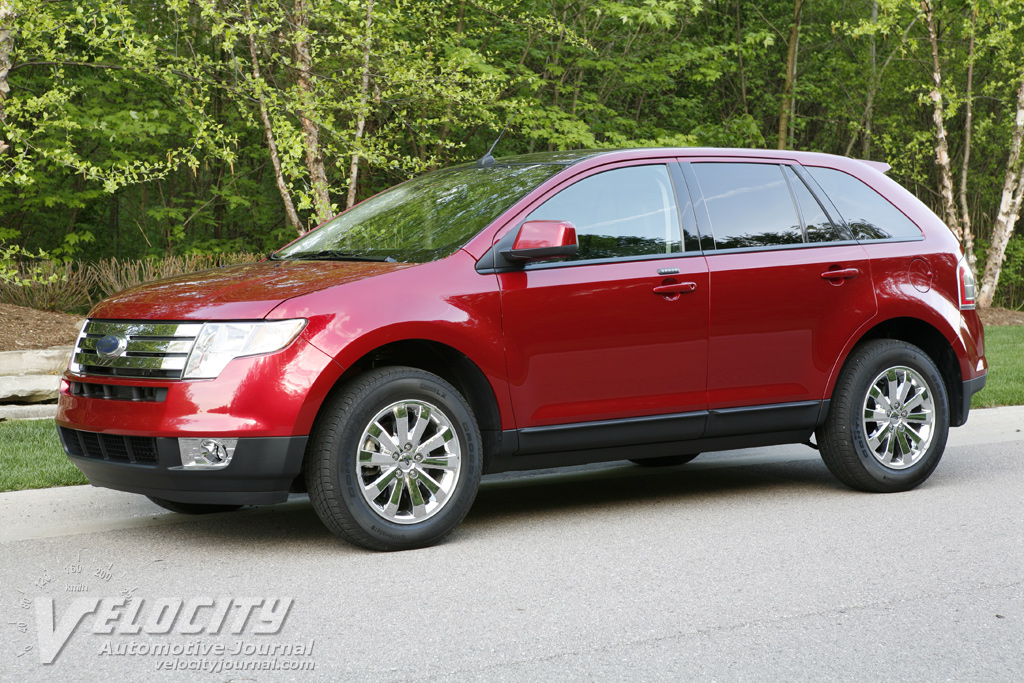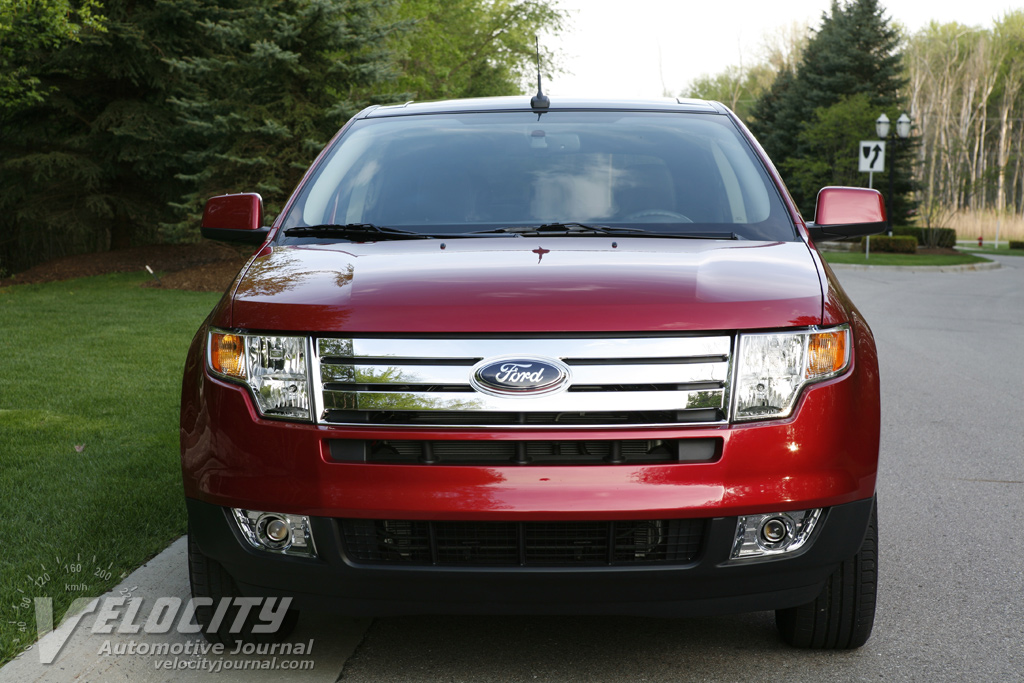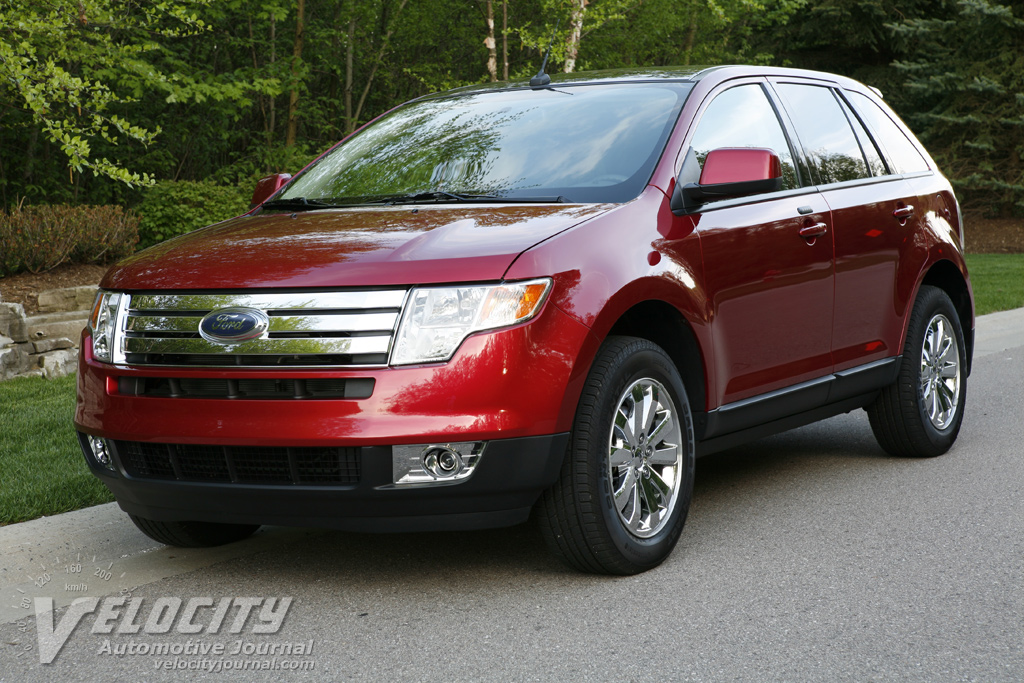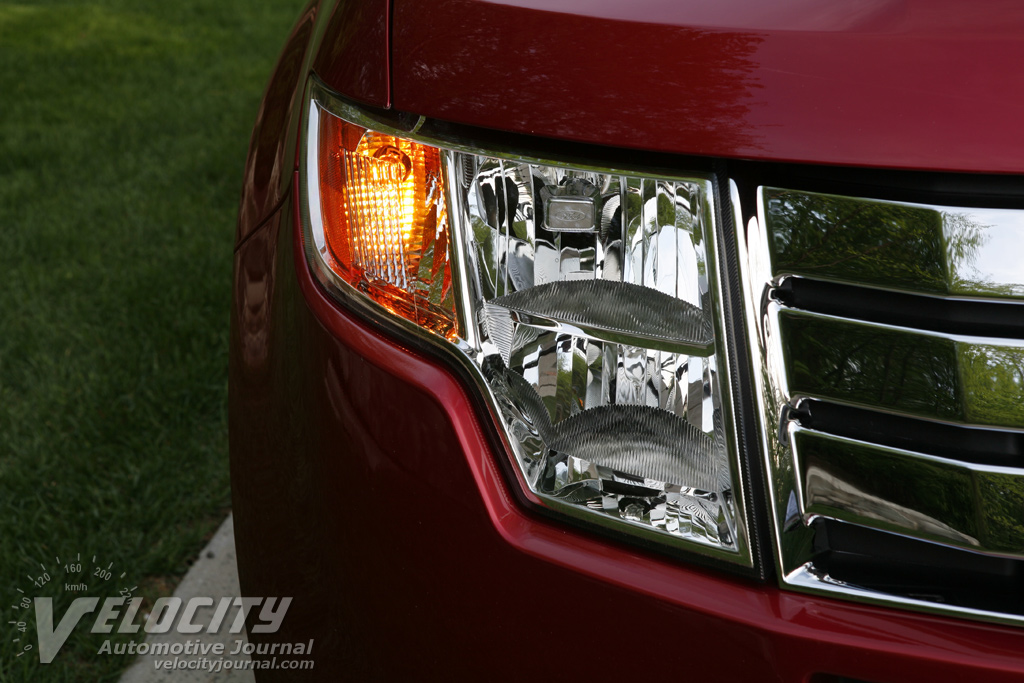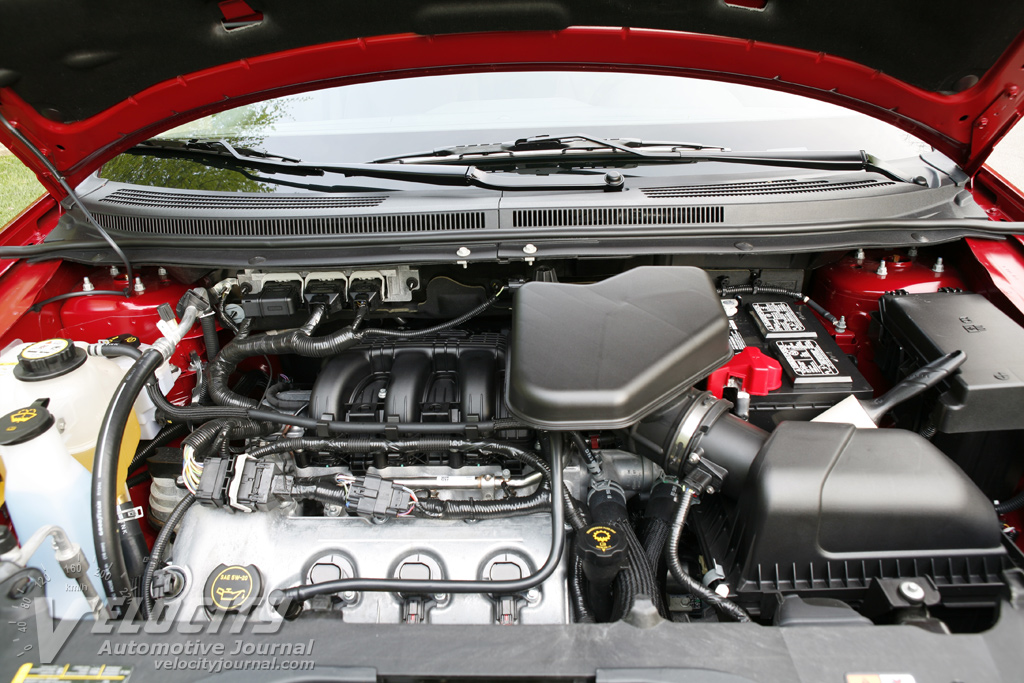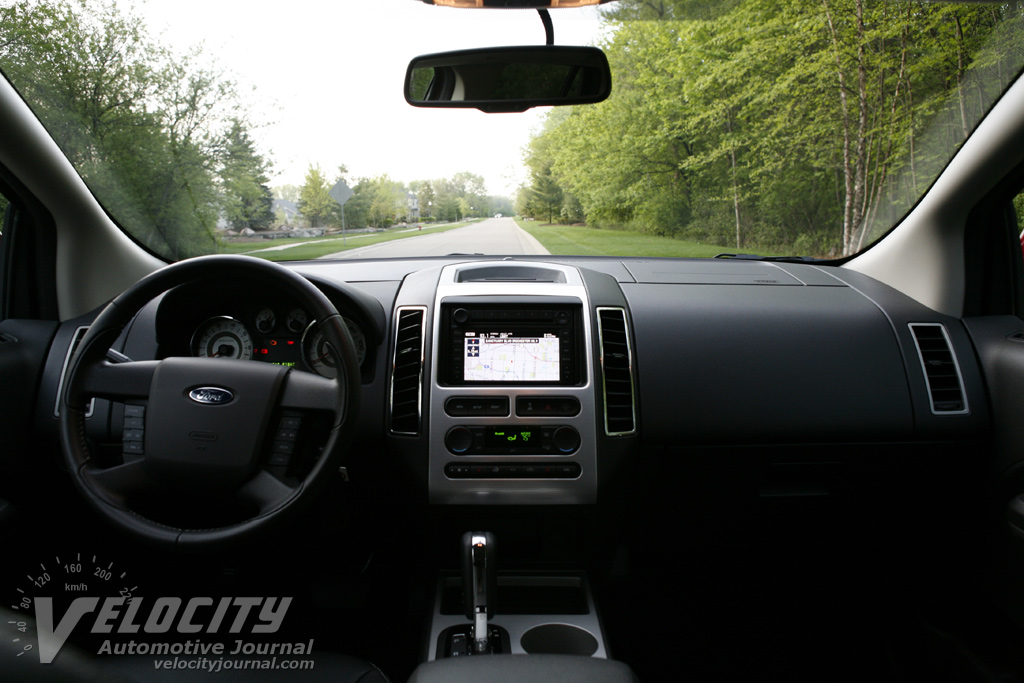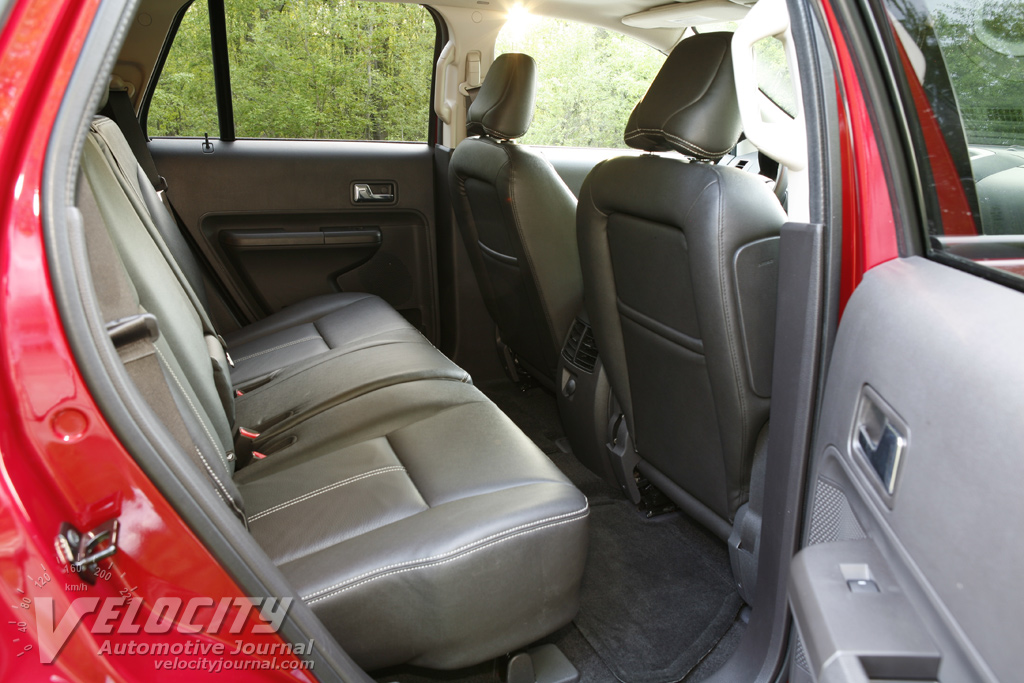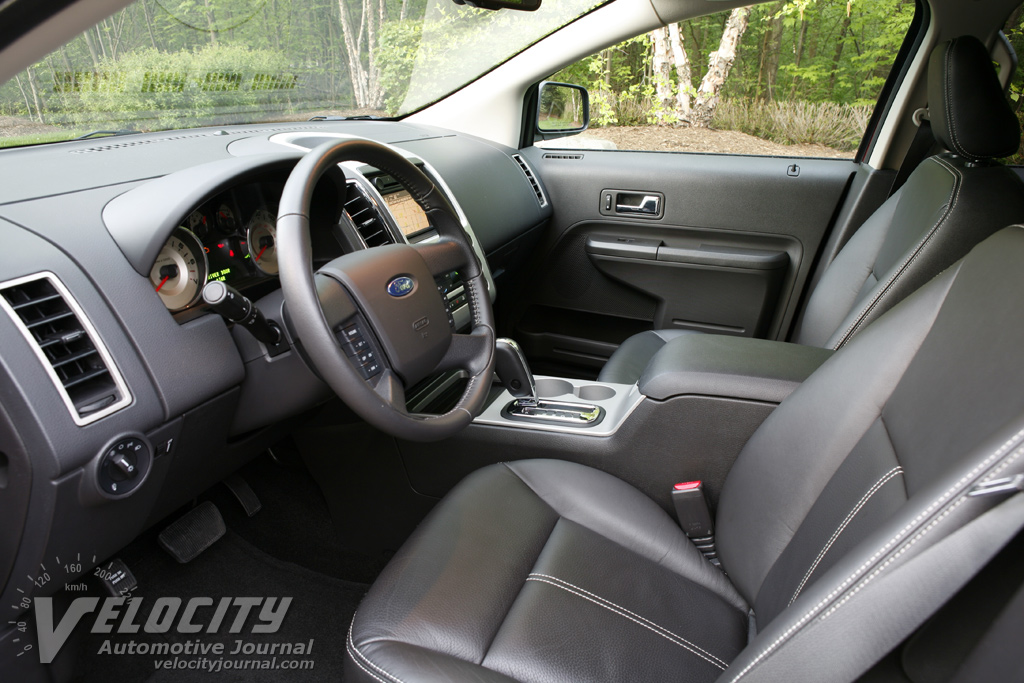Review: 2007 Ford Edge SEL AWD
05/17/2007
Shahed Hussain
The CUV (Crossover Utility Vehicle) segment is an expanding market in the US. Nearly all major manufacturers have CUVs in their lineups. Although it's sometimes difficult to pin down exactly what distinguishes a CUV from a station wagon or an SUV, there are a few general characteristics shared by nearly all CUVs. A unibody chassis, FWD or AWD drivetrain, and a high seating position are elements of most CUVs. Some CUVs are styled to resemble traditional SUVs, while others look like tall station wagons or sport sedans. Of course, with such vaguely defined criteria, anything from a Subaru Outback to a Saturn Outlook could be classified as a CUV. So unlike other vehicle types, a CUV is essentially defined by its manufacturer, and not the marketplace.
Ford's new CUV entrant, the Edge, is aimed directly at the Nissan Murano. Other competitors include the Mazda CX-7, Hyundai Santa Fe, as well as the Chevrolet Equinox and Pontiac Torrent. Pricing is very competitive, with the base Edge SE starting at $25,320, the midlevel SEL begins at $27,315, while the $29,775 SEL Plus is the top tier model. Although FWD is standard, optional AWD ($1,650) is available on all trim levels.
A new 265-bhp 3.5L V-6, coupled to a 6-speed automatic is the sole powertrain. AWD Edge models get a slightly shorter 3.16:1 final drive ratio vs. 2.77:1 for FWD models. Both FWD and AWD models weigh in at over 2 tons: 4073 lbs. (FWD), 4282 lbs. (AWD). Fuel economy ratings are 18/25 (FWD) and 17/24 (AWD) for city/highway mileage. We averaged 18-21 MPG in mixed driving in the tested Edge SEL Plus AWD.
The Edge incorporates the three-bar grille that adorns all new Ford cars and trucks. Some observers have noted a passing resemblance to the Chrysler Pacifica, while others believe the Edge looks too much like a minivan. We think that in spite of some derivative details, the Edge is a fresh look for Ford that separates it from some of the more generic Japanese and Korean competition. Standard 235/65R17 tires on 17-inch alloy wheels can be replaced with 245/50R18 tires and 18-inch alloy wheels on Edge SEL models. Although Ford offers chrome-plated plastic wheel covers for some extra flash, we prefer the standard painted alloy wheels.
An expansive Vista Roof (tm) option takes the moonroof concept to its logical conclusion. The Vista Roof combines an oversize sliding moonroof with a rear fixed skylight. Power-operated dual sliding shades keep the sun at bay when you don't want full solar exposure. A black mesh fabric baffle pops up when the roof slides open to reduce wind noise. For $1,395, the Vista Roof is an expensive option, but sun lovers will consider it mandatory, even if it chops 2.2 inches of headroom from front passengers.
Inside the Edge, the designers spent time adding stylish touches throughout the interior. The sloping dash, covered in pebble grained plastic fits together tightly. Normally, one would expect soft touch surfaces on the dash and door panels, but the Edge makes do with hard plastic. Ford didn't skimp on the steering wheel though, which is leather wrapped for better tactile feel. Cruise control, audio, fan speed, and cabin temperature buttons are nestled on the 4-spoke steering wheel. A textured plastic cover with the Ford logo hides the driver's airbag.
Attractive chrome-rimmed gauges are finished in an attractive pale gold metallic with black markings. The tachometer and speedometer are separated by a green-on-black trip computer display that shows fuel economy, compass direction, and vehicle status. The aluminum fascia center console has a touch screen LCD for audio and navigation controls. Buttons flanking the display allow easy access to frequently used audio and map settings. Using the touch screen can be initially a frustrating experience, because the interface is overly complex for both the audio and navigation controls. Our touch screen gripes lessened with familiarity, but we still believe that Ford needs to simplify the user interface, especially for the less technically adept. Below the navigation/audio screen are the clearly labeled HVAC controls, as well as the pushbuttons for the heated front seats. A green-on-black HVAC display indicates temperature and fan settings. Vertical center vents flank the audio/navigation display, with complementary vents at the outboard edge of the dashboard. For some reason the center vent housings are chrome plated, but the outboard vent housings are painted pale gold. A minor oversight, but we wonder why Ford didn't correct it before Edge production started.
The SEL Plus is equipped with 6-way power driver's seat, which returns to a preset position once the key is inserted into ignition. Despite all the power controls, seat rake is adjusted manually. Although the charcoal hued seats are partially leather covered, the sides and rear of each seat are upholstered in an odd rubbery polymer that resembles neither leather nor vinyl. We're not sure why Ford didn't specify the typical textured vinyl that most other manufacturers use. Although the leather upholstery is attractively grained, the texture is too slippery to hold the driver in place around curves, while the flat bolsters don't stop your sideways motion. Drivers taller than 5'-8" may find inadequate thigh support, because the seat cushions are too short. In an effort to provide a more commanding view of the road, Ford raised the seat height to the point that the driving position is akin to a minivan. Shorter owners may find the seating desirable, but we suspect that long trips may cause driver fatigue. Rear seat room is excellent, with plenty of legroom, with adequate headroom for passengers up to 6 ft. tall. Unfortunately, the rear passengers will also suffer from insufficient thigh support due to the abbreviated seat cushions. Remote release switches in the rear cargo compartment will fold the 60/40 split rear seats individually to easily expand cargo capacity with a flat load floor.
All Edge models are equipped with a refined all-aluminum 3.5L V-6, mated to a 6-speed automatic. This class-leading powertrain combination distinguishes the Edge from its Japanese and American competition. Our tested Edge SEL was equipped with optional AWD, which functioned unobtrusively in normal driving. With 265-bhp and 250 lb.-ft. of torque, the Edge accelerates quickly when lightly loaded, squatting rearward noticeably at full throttle. Torque steer was completely absent, as the AWD system quickly sent torque to the rear wheels as required. The Edge does not offer a differential lock mode for the AWD system or a low range. A lock mode would help get the Edge unstuck in deep snowdrifts, but we suspect that most owners won't miss it.
The new 6-speed automatic, shared with other Ford and Mazda products, has closely spaced ratios for seamless shifts at nearly any speed. Unfortunately, this superb transmission is hampered by a nearly complete lack of manual shift control. Although Ford could have shown the transmission mode (e.g. D, or "5") for the 6-speed automatic on the instrument panel status display, it chose not to. The chrome and leather covered transmission shift gate is of no help either, since the markings for "D" and "L" give no indication of which gear the transmission is in. The driver cannot even shift the transmission to a semi-automatic mode for greater control. Despite the O/D lockout button on the shifter, the Edge actively discourages drivers who prefer to occasionally shift for themselves. We find this especially puzzling since Ford's recent advertising for the Edge trumpets its performance credentials. The Edge deserves a semi-automatic transmission mode, so we hope Ford rectifies this oversight soon.
Ride and handling are a different story, as the chassis engineers tuned the Edge with compliant damping and spring rates, but without excessive float and wallow. Road impacts are heard, but filtered out without upsetting the chassis. Wind noise is hushed, the engine is muffled, and there is none of the tire rumble that plagues many truck based SUVs. The Edge tracks confidently on the highway up to at least 85 MPH, but we didn't have the opportunity to go much faster. In summary, the Edge handles more like a tall sedan than an SUV on the road, which is an easy transition for former car and SUV drivers.
Former SUV drivers will be pleased with the direct, precise steering, comparable to a typical midsize family sedan. With its perfect on center feel, the steering transmits road textures unfiltered to the leather-wrapped wheel. The optional 245/60R18 Continental tires (235/65R17 tires are standard) take some credit for the sharp reflexes; although the power assisted rack-and-pinion steering system is largely responsible.
Ford includes standard 4-wheel disc brakes with ABS, AdvanceTrac(R) traction control, and Roll Stability Control (RSC(R)) on all Edge models. Choose the AWD option and you get bigger front disc brakes to compensate for the extra drivetrain weight. The brake pedal is reassuringly firm, with good pedal feel. The Edge dives noticeably under hard braking, but all the brake electronics keep everything in control. Other standard safety features include front side airbags and Safety Canopy side curtain airbags to protect 1st and 2nd row passengers.
We think that the Edge is a needed addition to Ford's lineup, mainly to help dealers starving for new products. However, Ford may confuse some customers with the overlap between the upcoming Taurus X (a.k.a. Freestyle), Escape, and Explorer. The Edge and Taurus X overlap in price, although the Taurus X accommodates a 3rd row seat. Some potential Edge customers may be tempted by the less expensive Escape, which offers similar accommodations in a more truck-like body. The capable Explorer starts at nearly the same price as the Edge, which may lure some buyers not overly concerned with fuel economy. Prospective Lincoln MKX buyers may also cross-shop the Edge, which shares the same platform and powertrain. Although the MKX lists at more than $4,000 higher than the Edge, its main draw is a plusher interior, and the availability of some expensive option packages that inflate its sticker even higher. Frankly, the Edge is a far superior value to the MKX, so unless you must have the Lincoln badge, the Ford version is the obvious choice. Mazda, owned by Ford, sells the CX-7, which is a direct competitor to the Edge in size and price. The primary difference is that Mazda powers the CX-7 with a 2.3L turbo I-4 vs. the 3.5L V-6 found in the Edge. The CX-7 has sharper handling, but gives up ride comfort to the Edge. Ironically, the Edge faces as much competition within the Ford umbrella as it does from rival CUVs sold by other manufacturers.
Ultimately, the Edge addresses Ford's need for a CUV to take on the Nissan Murano. In the rapidly expanding market segment, the Edge should attract more customers to Ford showrooms, many of which may not have considered a Ford product before. With its class-leading powertrain and stylish exterior, the Edge stands out from most of its competition. If Ford would address some of its design oversights, the Edge could become a benchmark in the affordable CUV segment.

